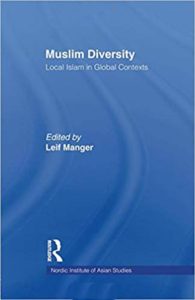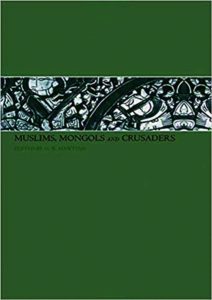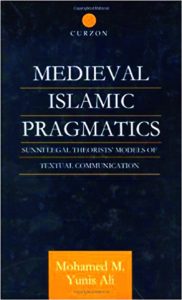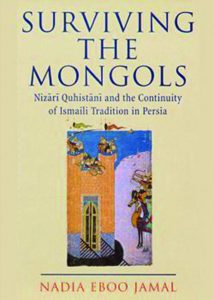

The Jalayirids: Dynastic State Formation in the Mongol Middle East
Patrick Wing
Edinburgh University Press (2016)
This book traces the origins, history, and memory of the Jalayirid dynasty, a family that succeeded the Mongol Ilkhans in Iran and Iraq in the 14thand early 15thcenturies. The story of how the Jalayirids came to power is illustrative of the political dynamics that shaped much of the Mongol and post-Mongol period in the Middle East. The Jalayirid sultans sought to preserve the social and political order of the Ilkhanate, while claiming that they were the rightful heirs to the rulership of that order. Central to the Jalayirids’ claims to the legacy of the Ilkhanate was their attempt to control the Ilkhanid heartland of Azarbayjan and its major city, Tabriz. Control of Azarbayjan meant control of a network of long-distance trade between China and the Latin West, which continued to be a source of economic prosperity through the 8th/14thcentury. Azarbayjan also represented the center of Ilkhanid court life, whether in the migration of the mobile court-camp of the ruler, or in the complexes of palatial, religious and civic buildings constructed around the city of Tabriz by members of the Ilkhanid royal family, as well as by members of the military and administrative elite.
Patrick Wing is Assistant Professor of History at the University of Redlands. His research focuses on the history of the Middle East in the period of the Mongols and their successors.

Muslim Diversity: Local Islam in Global Contexts
Leif Manger
Routledge (1999)
The term ‘local Islam’ has been coined to describe local responses to the effects of globalisation in the Islamic world. All contributions to this volume present cases of ‘local Islam’ as well as discussing the term itself. But what all of this group of anthropologists and historians convey is a feeling of dissatisfaction with the very term. Their uneasiness relates to the conceptual problems arising from seeing Islam as either local or global. Rather, the authors argue in favour of a focus not on Islam but on the lives of Muslims, putting their lives into the context of complex historical developments. Ranging across much of the vast extent of the Islamic world - from West Africa and the Near East to China and Southeast Asia - the contributions deal with the effects of migration on local Islamic traditions in Bangladesh; conflicts between Muslim sects in Pakistan; the development of jihad in West Africa; the problem of maintaining a Muslim identity in China; how Javanese Muslims combine their Islamic faith with belief in a local Javanese spirit world; the comparison between urban- and rural-based Islam in Syria; and (in two studies from western Sudan) issues of belief and broader aspects of identity management in a multi-ethnic situation.
Leif Manger is professor in the Department of Social Anthropology at the University of Bergen

Muslims, Mongols and Crusaders
Gerald Hawting
Taylor & Francis (2004)
The period from about 1100 to 1350 in the Middle East was marked by continued interaction between the local Muslim rulers and two groups of non-Muslim invaders: the Frankish crusaders from Western Europe and the Mongols from northeastern Asia. In deflecting the threat those invaders presented, a major role was played by the Mamluk state which arose in Egypt and Syria in 1250. The Bulletin of the School of Oriental and African Studies has, from 1917 onwards, published several articles pertaining to the history of this period by leading historians of the region, and this volume reprints some of the most important and interesting of them for the convenience of students and scholars.
Gerald R. Hawting is Head of the History Department and Professor in the History of the Near and Middle East at the School of Oriental and African Studies, University of London. His special interest and most of his publications relate to the early development of Islam in the Middle East.

Medieval Islamic Pragmatics: Sunni Legal Theorists’ Models of Textual Communication
Muhammad M. Yunis Ali
Routledge (2000)
This book deals with two different pragmatic approaches to textual communication: (i) the mainstream approach followed by the ‘Ash’ari s, Hanafi s and Mu’tazili s, (ii) the salafite approach followed mainly by the Hanbali s, defended and elaborated by Ibn Taymiyyah. One of the primary aims of the book is to explore and formulate several Muslim legal theorists’ pragmatic theories, communicative principles and linguistic views, construct them in the form of models and set them within a general uniform framework. Another aim is to reveal a corpus of information and data which, though highly relevant to modern pragmatics, is still unknown. This study, which can be seen as an extensive introduction to ‘medieval Islamic pragmatics’, is the first attempt to examine the approaches followed by the Salafi s or the mainstream from a pragmatic viewpoint. There has been no attempt to explain the principles and the strategies utilised by the medieval Sunni Muslim legal theorists in their account of how communication works and how successful interpretation is achieved. Of course, a lot of work has been done on different Islamic sects and their different positions over the interpretation of the Quran and Sunnah, but these studies fall short of delving into the underlying communicative principles that motivate their differences over interpretation. The author’s formulation of the Muslim legal theorists’ views is enhanced by setting up a reliable theoretical foundation and by delving into their underlying philosophical principles. This involves relating the legal theorists’ insights into interpretation and communication to their relevant ontological, epistemological and theological outlooks, and comparing these insights with their modern pragmatic counterparts.

Surviving the Mongols: Nizari Quhistani and the Continuity of Ismaili Tradition in Persia
Dr. Nadia Eboo Jamal
I.B. Tauris
In the course of their long history, the Ismailis have, through the diversity of their literary and intellectual traditions, made important contributions to Islamic thought and culture. A distinct Nizari religious tradition, based on the Persian language, developed during the Alamut period (483–654/1090–1256) when the Ismailis of Persia had a state of their own centred on the stronghold of Alamut. The Nizaris lost their state and political prominence as a result of the Mongol invasions of Persia in 654/1256. But, in spite of the claims of the historian ‘Ata’ Malik Juwayni, who was in the service of the Mongol conqueror Hülegü, the Persian Nizari community was not totally extirpated by the Mongols. Countless numbers were massacred and the bulk of the Nizari literature was destroyed. However, the Nizari imamat continued in the progeny of Imam Rukn al–Din Khurshah (d. 655/1257), the last ruler of Alamut and certain aspects of the Nizari da‘wa institution also survived.
With the fall of Alamut, the Persian Nizaris entered an obscure period of their history, which lasted two centuries, until their Imams emerged at the village of Anjudan in central Persia, around the middle of the 9th/15th century, and initiated a revival in Nizari da‘wa and literary activities. Many aspects of Nizari Ismaili history during this period are still shrouded in mystery due to a lack of reliable sources as no written works are known to have been produced in this period. The Ismailis observed taqiyya, guarding their identity and adopting Sufism and other forms of expression, to protect themselves against persecution. As a result, many scattered Nizari groups either disappeared or assimilated themselves into other religious communities. However, progress in Ismaili studies has enabled scholars to acquire a better understanding of at least the main trends in the history of Persian Nizari Ismailism of the early post–Alamut centuries. It is in such a context that the present book should be read and appreciated.
By drawing extensively on Nizari Quhistani’s unpublished collected works, the Kulliyyat, particularly his versified Safarnama, and the findings of modern scholarship in the field, Dr Eboo–Jamal has produced here the first thorough study of this poet in English, as well as an important contribution to the history of the Persian Nizari Ismailis in the aftermath of the Mongol debacle. She provides ample documentation of the way the Nizaris of Persia succeeded, against all odds, not only to retain their distinct religious identity but also to adopt their tradition to the changed environment, which brought the community closer to Persian Sufism and enabled it to survive under highly adverse circumstances in post–Mongol Persia.

